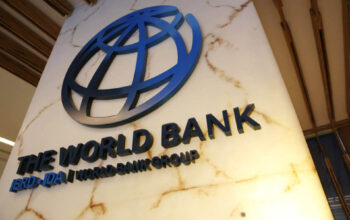By Staff Reporter
ISLAMABAD: The Finance Ministry said on Tuesday it expects the economy to remain positive in the current fiscal year, as it projected a decline in inflation and a rise in growth ahead of talks with the International Monetary Fund (IMF).
The ministry said in its monthly economic report that consumer price inflation, which hit a record high of 31.4 percent in September, was expected to fall to around 27-29 percent in October due to easing food and energy prices.
It also said it was working to secure $19.3 billion in external financing from multilateral and bilateral sources, including $3 billion already approved by the IMF, to meet its balance of payments needs during the remaining months of the current fiscal year.
“In the coming months, it is expected that overall economic activity will remain positive throughout the outgoing fiscal year due to a rebound in domestic economic activities and improvement in inflationary pressures,” the report said.
The ministry’s upbeat assessment comes as Pakistan prepares to start talks with the IMF on the first review of a $3 billion loan program approved last July from Thursday.
The review process will be conducted in two phases. Initially, technical talks will be held, which will be followed by policy-level discussions. If talks are successful, Pakistan will get a $700 million much-needed tranche.
Officials of the Finance Ministry sounded confident about the successful completion of the first review (July-September 2023), though analysts said external financing needs may come under sharp focus during the review, as the budgeted $4.5 billion loans from foreign commercial banks and $1.5 billion through the issuance of Eurobonds for the current fiscal year have yet to materialize.
The ministry said it had achieved a primary surplus of 417 billion rupees ($2.5 billion) or 0.4 percent of GDP in the first quarter of the fiscal year, against a target of 87 billion rupees under the IMF program.
The current account deficit had narrowed by 58 percent to $950 million in the first three months of the fiscal year, as trade and investment flows normalized after the import restriction to check dollar outflow eased.
The report said the foreign exchange reserves of the central bank had stabilized at around $7.5 billion, equivalent to 1.5 months of import cover, after receiving $3 billion from the IMF and other sources.
The ministry also highlighted the positive trends in the stock market, bond market, exchange rate, and monthly economic indicators, reflecting a pick-up in economic activity and market confidence.
The Pakistan Stock Exchange has rallied 11 percent in October and has crossed the psychological barrier of 51,000 points, for the first time since May 2017. The international and domestic bond markets have rallied around 8 percent in October on expectations of ease in inflationary pressures and a positive outcome of the IMF staff review in November.
The rupee recovered 9 percent in October due to reforms initiated on the exchange companies and a crackdown against illegal transactions.
The Monthly Economic Indicator for September posted the third consecutive month of positive gains in the index, reflecting growth momentum in the high-frequency economic variables.
The ministry said the GDP growth outlook had improved with data showing positive momentum in manufacturing activity and an improved outlook for agriculture output.
“The recent release of LSM data showed positive growth of 2.5 percent in August, reversing 14 months of downward spiral in the manufacturing sector,” the report said.
The removal of restrictions on imports, clearance of outstanding L/Cs, and improved dollar liquidity in the markets following an increase in SBP FX reserves contributed to the pick-up in economic activity.
In the agriculture sector, cotton production is projected to rise 127 percent (estimated at 11.5 million bales) for 2023-24, compared to last year. Rice production is also showing an impressive growth of 18 percent compared to last year. The increase in these main crops is encouraging for the overall agricultural performance.
Copyright © 2021 Independent Pakistan | All rights reserved




